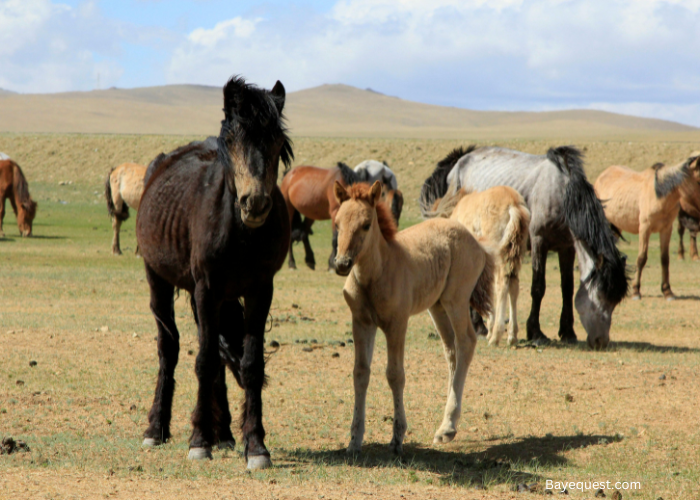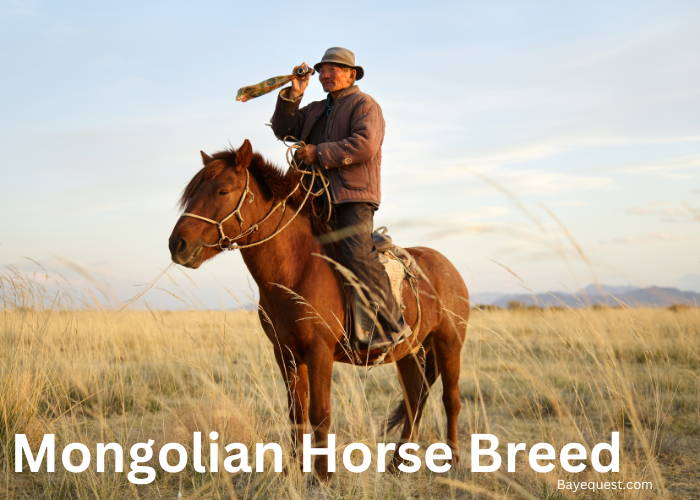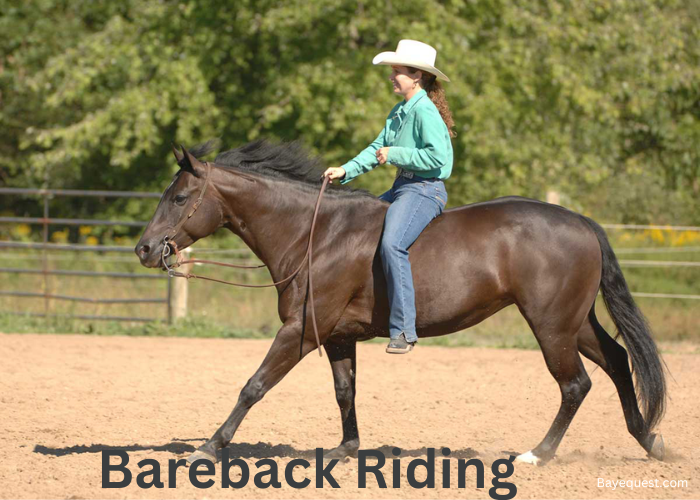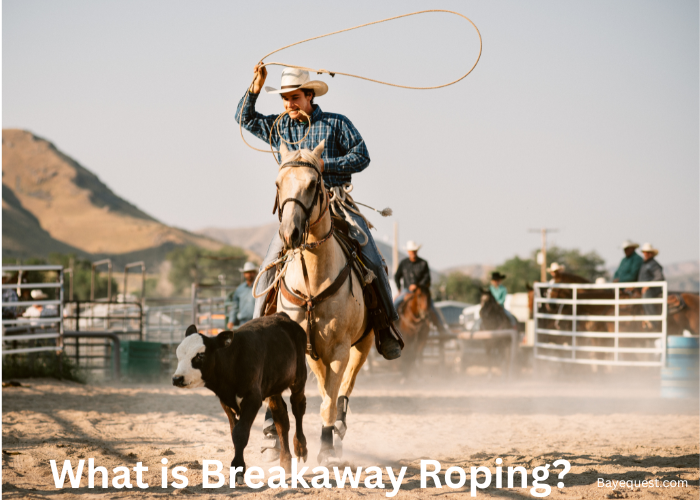Tough. Fearless. Built for the wild. The Mongolian horse is no ordinary breed.
It carried Genghis Khan’s warriors across vast empires, surviving brutal winters and scorching summers.
Small but mighty, these horses are the heartbeat of Mongolia’s nomadic life. They roam free, yet they always find their way home.
No fences. No barns. Just open plains and endless skies. Fast, strong, and stubborn, they are more than just horses—they are legends.
Want to know what makes them so special? Saddle up. This is the story of the Mongolian horse.
What is a Mongolian Horse?
A Mongolian horse is a hardy, small but powerful breed native to Mongolia.
These horses have remained unchanged for centuries, thriving in extreme conditions with little human intervention.
Despite their stocky build and short stature, they are incredibly strong, fast, and enduring.
Known for their independence, they often roam freely yet remain loyal to their riders.
Mongolian horses have played a vital role in the country’s nomadic culture, from herding livestock to carrying warriors in battle.
Their resilience, stamina, and adaptability make them one of the toughest horse breeds in the world.
Mongolian Horse Breed History and Origin
The Mongolian horse is one of the oldest and purest horse breeds in the world.
Its history dates back over 4,000 years, deeply intertwined with Mongolia’s nomadic culture.
These horses have remained unchanged for centuries, adapting to the harsh climate of the Mongolian steppes.
Mongolian warriors, led by Genghis Khan, relied on these horses to build one of the greatest empires in history.
Their unmatched endurance allowed Mongol armies to travel vast distances, outpacing and outlasting their enemies.
Unlike modern domesticated breeds, Mongolian horses still live semi-wild, grazing freely and developing survival instincts that make them incredibly tough.
Today, they remain central to Mongolia’s way of life, used for herding, racing, and traditional ceremonies.
Their legacy as one of the world’s most resilient horse breeds continues.
Characteristics of the Mongolian Horse Breed
Let’s dive into the unique characteristics of the Mongolian horse:
Conformation
Mongolian horses are small but incredibly strong. They stand between 12 and 14 hands (about 48–56 inches) and weigh between 500 and 600 pounds.
Their bodies are stocky and muscular, built for endurance rather than speed. They have short, thick legs, broad chests, and strong hooves that rarely require shoeing.
Their large heads and short, sturdy necks give them a distinctive look, while their dense coats provide insulation against Mongolia’s extreme weather conditions.
Colors
Mongolian horses come in almost every coat color, including bay, black, chestnut, gray, palomino, dun, and even pinto patterns.
Some horses have primitive markings like dorsal stripes and zebra-like leg striping, particularly in dun-colored horses.
Coat colors often change with the seasons, becoming darker in winter and lighter in summer.
Temperament
These horses are known for their independence, intelligence, and resilience. Since they live semi-wild for most of the year, they develop strong survival instincts.
They can be stubborn, but they are also incredibly loyal once they bond with their rider.
Mongolian horses are naturally calm but can become spirited when running or during races.
Unlike modern domesticated horses, they are tough and require minimal care.
Disciplines
Mongolian horses are versatile and used for:
Racing. Mongolian horse racing is a major cultural tradition, especially during the Naadam Festival, where horses race long distances across open terrain.
Herding. Nomadic herders rely on them to round up cattle, sheep, and goats across vast landscapes.
Transportation. They have been used for centuries as reliable travel companions across Mongolia’s rugged terrain.
Combat and warfare. Historically, they played a key role in Mongol military campaigns, carrying warriors into battle.
Mongolian Horse Health
Despite being one of the hardiest horse breeds on the planet, extreme weather, parasites, and nutritional challenges can sometimes pose risks.
Let’s take a closer look at their genetic health and common health concerns.
1. Extreme weather-related conditions
Winter starvation (“Dzud”). In particularly harsh winters, food becomes scarce, leading to starvation and mass die-offs.
Heat stress. Though adapted to cold, extreme summer heat can cause dehydration, especially during long-distance races.
2. Nutritional deficiencies
Lack of mineral supplements. Because they graze freely, they may not always get essential minerals like salt, leading to deficiencies.
Seasonal weight fluctuations. They lose weight in winter and regain it in summer, which is normal but can weaken younger or older horses.
3. Parasitic infections
Internal parasites. Worms and other parasites can affect digestion and overall health if not managed.
External parasites. Ticks, lice, and flies can cause irritation, infections, and even disease transmission.
4. Hoof and leg issues
Overgrown hooves. Since they roam freely, some may develop overgrown or cracked hooves if terrain conditions don’t naturally wear them down.
Joint and ligament strain. Long rides over rough terrain can lead to strain or injury, although their natural toughness helps them recover.
5. Respiratory and infectious diseases
Dust exposure. Dry, dusty environments can sometimes lead to respiratory irritation.
Equine influenza and other diseases. Though rare, Mongolian horses can contract equine influenza or other infectious diseases when exposed to outside horses.
Care and Management
Unlike modern domesticated breeds, they require minimal care.
However, proper management ensures they remain healthy and strong.
1. Natural grazing and feeding
Mongolian horses graze freely on grasslands year-round, feeding on wild grasses, shrubs, and even tree bark in winter.
In harsh winters, herders sometimes supplement their diet with hay, grains, or dried grass, but most horses survive on stored body fat.
Salt and mineral supplements can help prevent deficiencies, though traditionally, Mongolian horses get nutrients naturally from the land.
2. Shelter and protection
These horses do not live in stables. They roam freely, relying on their thick winter coats for insulation.
During extreme winters (Dzud), some herders provide windbreaks or temporary shelters to protect weaker horses.
Herders use a nomadic system, moving horses to different grazing areas to prevent overgrazing.
3. Hoof and leg care
Mongolian horses have strong, self-maintaining hooves that rarely require shoeing.
Regular observation ensures they don’t develop overgrown or cracked hooves.
After long rides, they are allowed to rest and recover naturally, reducing the risk of joint and muscle strain.
4. Veterinary care and disease prevention
Traditional Mongolian methods focus on natural healing, using herbs and ancient remedies.
Deworming and parasite control help prevent infections, though many horses develop resistance over time.
Basic vaccinations may be used in more modernized herding areas to prevent common equine diseases.
5. Training and handling
Mongolian horses are trained from a young age, often by children, using traditional methods.
Riders use minimal tack, often riding with rope halters and simple wooden saddles.
Horses are handled daily but remain semi-wild, giving them a strong survival instinct.
6. Seasonal care adjustments
Winter – Horses must find food under snow, so weaker ones may need extra feed.
Summer – They are often used for racing, herding, and long-distance travel, requiring hydration and rest.
Spring and fall – Herders move their horses to fresh pastures, ensuring access to new grazing areas.
Mongolian Horse Breed Nutrition
Mongolian horses survive on a natural, free-range diet, relying on the grasslands of Mongolia.
Unlike domesticated horses that need balanced feed, they adapt to seasonal changes and eat whatever nature provides.
In warmer months, they graze on wild grasses and supplement their diet with shrubs and herbs.
In winter, when food is scarce, they eat tree bark and roots. During Dzud (harsh winters), they dig through snow for grass, and some herders provide hay or grain.
Spring is the hardest season, as their stored fat runs low.
These horses do not rely on commercial feed. Some herders offer barley, millet, or hay in extreme conditions.
Salt and minerals are sometimes given, but most nutrients come from natural sources.
Mongolian horses drink from rivers, lakes, and snowmelt. In winter, they eat snow for hydration.
Their ability to survive with little food and water makes them one of the toughest horse breeds in the world.

How to Train a Mongolian Horse
Training a Mongolian horse requires patience and an understanding of its natural instincts.
These horses are independent and grow up in the wild, making their training different from modern domesticated breeds.
Instead of strict control, the focus is on trust, experience, and letting the horse learn naturally.
One of the first steps in training a Mongolian horse is gentle handling. Young foals should be allowed to get used to human presence without force.
Herders often touch and interact with them in small ways, so they learn that people are not a threat.
Since these horses are naturally cautious, sudden movements or aggressive handling can make them fearful. Patience is key, and early interactions should be slow and calm.
Mongolian horses are trained with minimal equipment.
Unlike Western riding, which relies on bridles, bits, and saddles with padding, Mongolian riders use simple rope halters and wooden saddles.
The horse is allowed to move naturally, without heavy restraints. This keeps them comfortable and allows them to develop confidence in their movements.
Overuse of tack can make them resistant, as they are not used to tight control.
One of the most effective training methods is allowing the horse to follow the herd.
Instead of forcing a young horse to move alone, trainers let it follow older, trained horses. This makes the process smoother, as the young horse feels safe in the group.
Mongolian horses learn best by observing and copying others. Riding alongside experienced horses helps them understand what is expected.
Trust between the horse and rider is more important than strict commands. Mongolian horses do not respond well to excessive rein pulling or forced movements.
Riders use voice cues, leg pressure, and body weight shifts to communicate.
The horse learns through repetition and daily tasks, such as herding livestock or carrying a rider over long distances.
Since Mongolian horses live in the wild, they rely on their instincts and do not require micromanagement.
Finally, training should be done with patience and respect for the horse’s natural abilities.
Mongolian horses are not bred for obedience but for endurance and survival. They must be allowed to think for themselves and adapt to different conditions.
With time, they become reliable, strong, and loyal partners. By understanding their unique nature, trainers can bring out the best in them without breaking their spirit.
Can I Ride a Mongolian Horse?
Yes, you can ride a Mongolian horse, but it is a very different experience from riding modern domesticated breeds.
If you are used to riding well-trained horses, adjusting to a Mongolian horse may take some time.
They are semi-wild and independent, meaning they do not always respond to reins and leg cues in the same way as Western-trained horses.
Instead of precise steering, Mongolian riders rely on body weight shifts, voice commands, and natural movement to guide the horse.
The saddle is another big difference. Traditional Mongolian saddles are small, hard, and sit high on the horse’s back.
They are designed for long-distance riding, but they can be uncomfortable if you are not used to them.
Some modern saddles are available for tourists, but many locals still prefer the traditional version.
Mongolian horses have incredible stamina, but they are not fast in short bursts. They are built for long, steady travel across rough terrain.
If you are planning to ride one, be prepared for an experience that feels closer to riding a wild horse than a domesticated one.
They can be stubborn at times, but once they trust their rider, they are loyal and hardworking.
So, yes, you can ride a Mongolian horse. But it will feel different from riding a trained horse in a stable.
It’s an adventure, a challenge, and an opportunity to experience the true nomadic way of life.
Related read: Can You Ride a Mongolian Horse?
Mongolian Horse Breed: Conclusion
The Mongolian horse is more than just a breed. It’s a symbol of strength, endurance, and freedom.
For centuries, it has carried warriors, herders, and travelers across vast lands.
These horses survive in the wild, needing little care yet proving incredibly loyal. They are small but powerful, independent yet dependable.
Their history is woven into Mongolia’s culture, and their legacy lives on. Whether racing, herding, or roaming the steppes, they remain unmatched in toughness.
The Mongolian horse is not just a horse. It’s a legend that still runs free.








